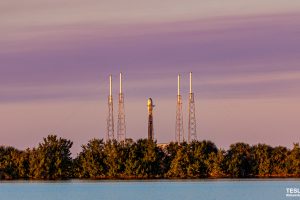- 🛰️ Starlink Aid in Japan: SpaceX’s Starlink internet service is actively assisting in Japan’s restoration efforts following the earthquakes on January 1.
- 🌍 Earthquake Impact: Japan experienced a series of earthquakes, including the Noto Peninsula Earthquake with a maximum seismic intensity of 7.
- 📡 KDDI’s Support: Japanese telecommunication operator KDDI is providing Starlink services to various entities like the Self-Defense Forces, electricity companies, local governments, and other organizations involved in rescue and restoration work.
- 🚀 Collaboration Details: SpaceX and KDDI have been collaborating in Japan since August 2023, and they had signed an agreement to provide satellite-to-cellular service before the recent earthquakes.
- 📶 Communication Challenges: After the earthquakes, communication services were disrupted in disaster-stricken areas, leading to an increased demand for satellite mobile phones and Starlink equipment.
- 🌐 Base Stations and Staff Deployment: KDDI quickly set up base stations across Japan and deployed around 200 staff in Kanazawa to facilitate communication and aid efforts.
- 📡 Starlink Equipment Deployment: Starlink equipment, including 150 antennas, has been sent to Kanazawa, with 60 antennas available for rent to support ongoing restoration work.
- 🔄 Increasing Demand: The demand for Starlink has risen as restoration efforts continue, highlighting its effectiveness in providing communication services during and after natural disasters.
- 🤝 SpaceX and KDDI Partnership: The collaboration between SpaceX and KDDI involves providing satellite-to-cellular services, with plans to offer SMS text initially and expand to voice and data services.
- 📡🔗 Direct to Cell Capability: SpaceX showcased Starlink satellites with Direct to Cell capability, enabling communication in locations without cellular connectivity, particularly useful in dead zones and during/after natural disasters.
In the wake of Japan’s recent seismic upheaval, SpaceX’s Starlink internet service has emerged as a beacon of hope, playing a pivotal role in the restoration efforts that followed the series of earthquakes on January 1. This blog post delves into the key aspects of Starlink’s involvement, the collaborative efforts with KDDI, and the transformative impact on communication infrastructure during times of crisis.
Unveiling Starlink’s Humanitarian Mission 🛰️
SpaceX’s Starlink, known for its global internet coverage, has transcended its conventional role to become a crucial asset in disaster-stricken regions. The earthquakes that rattled Japan triggered a swift response, with Starlink at the forefront of providing essential communication services for rescue and restoration.
Understanding the Earthquake’s Impact 🌍
Japan, no stranger to seismic activity, faced a formidable challenge with the Noto Peninsula Earthquake, registering a maximum seismic intensity of 7. The aftermath necessitated immediate and coordinated efforts for rescue operations and the restoration of essential services.
KDDI’s Strategic Support 📡
Japanese telecommunication giant KDDI stepped into the breach, extending Starlink services to vital entities such as the Self-Defense Forces, electricity companies, local governments, and various organizations engaged in the arduous task of rescue and recovery.
SpaceX and KDDI: A Collaborative Journey 🚀
The collaboration between SpaceX and KDDI, initiated in August 2023, gained newfound significance during these challenging times. A pre-existing agreement to provide satellite-to-cellular services laid the foundation for the seamless integration of Starlink into the ongoing restoration efforts.
Overcoming Communication Challenges 📶
The earthquakes disrupted conventional communication services in the affected areas, prompting an immediate surge in the demand for satellite mobile phones and Starlink equipment. In the face of adversity, Starlink’s reliability shone through, offering a lifeline for communication in areas where it was urgently needed.
Base Stations and Rapid Deployment 🌐
KDDI’s strategic maneuvering involved the rapid establishment of base stations across Japan. Approximately 200 staff members were deployed to Kanazawa, forming a critical nexus for facilitating communication and coordinating aid efforts on the ground.
Starlink Equipment on the Frontlines 📡
The deployment of Starlink equipment became a game-changer. 150 antennas were swiftly sent to Kanazawa, with an additional 60 antennas made available for rent. This strategic move aimed to bolster ongoing restoration work by ensuring a reliable communication infrastructure.
Surging Demand: Starlink’s Test of Resilience 🔄
As restoration efforts gained momentum, so did the demand for Starlink services. The increased adoption highlighted the platform’s adaptability and effectiveness, proving its mettle in real-world scenarios and reinforcing its significance in disaster response strategies.
Future Prospects: Expanding Services and Capabilities 🤝
The partnership between SpaceX and KDDI is not merely a crisis response measure. Plans to offer SMS text initially and subsequently expand to voice and data services underscore the long-term vision of enhancing communication capabilities in Japan, particularly during and after natural disasters.
Direct to Cell Capability: A Technological Milestone 📡🔗
SpaceX’s unveiling of Starlink satellites with Direct to Cell capability represents a technological milestone. This feature empowers communication in locations without cellular connectivity, proving invaluable in dead zones and emerging as a critical tool for disaster response.





